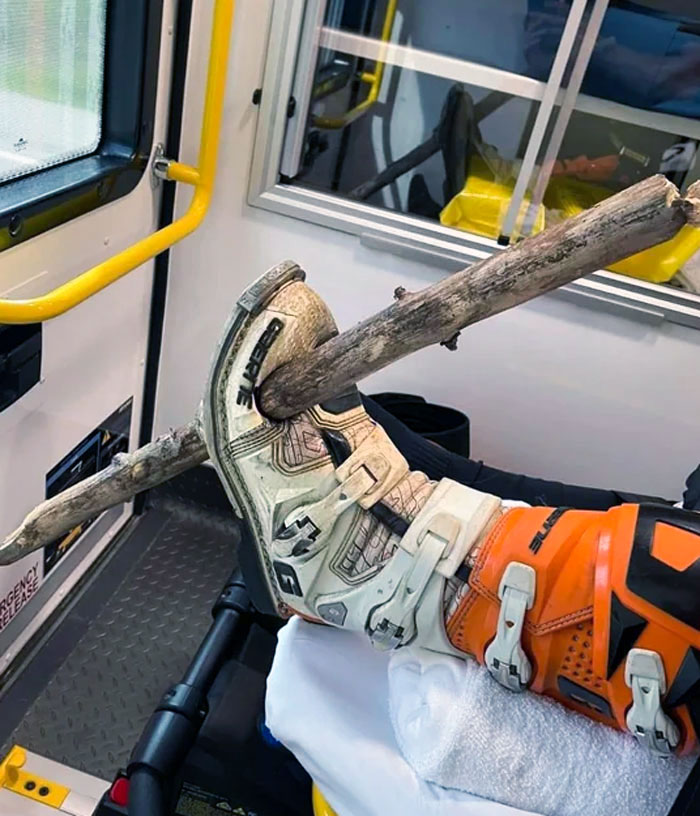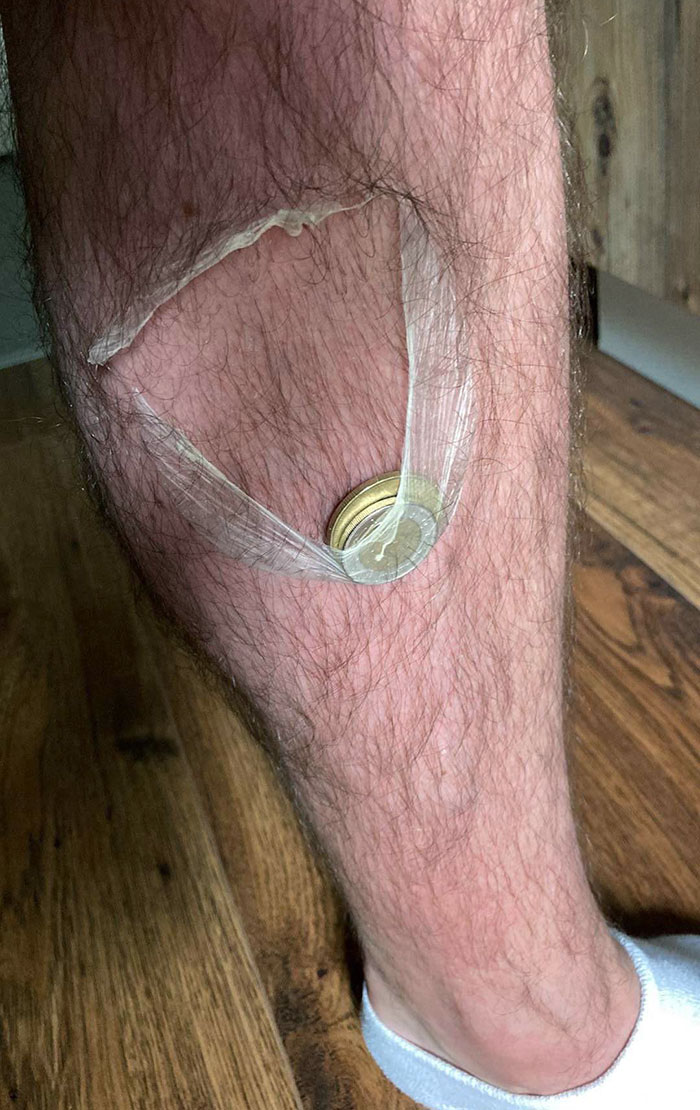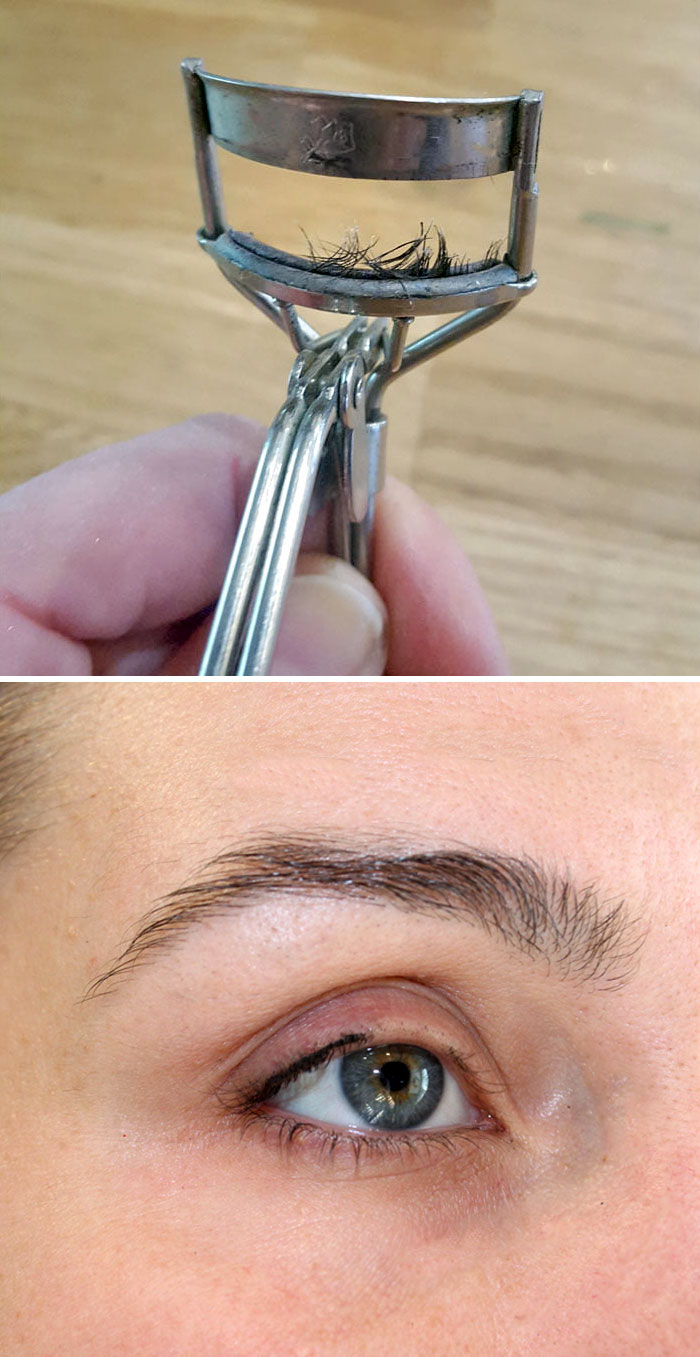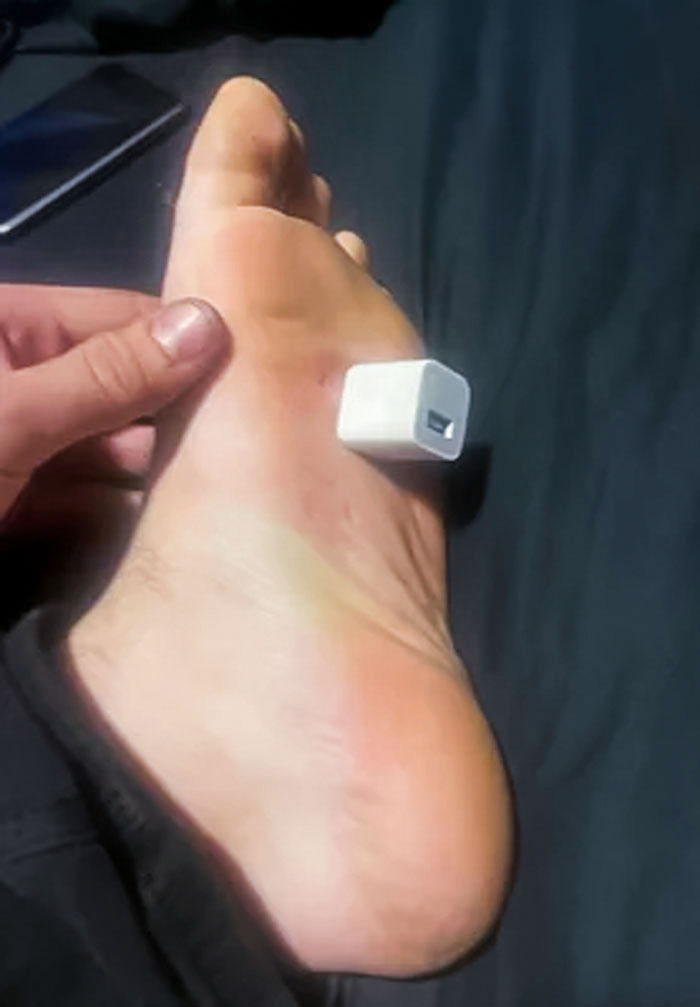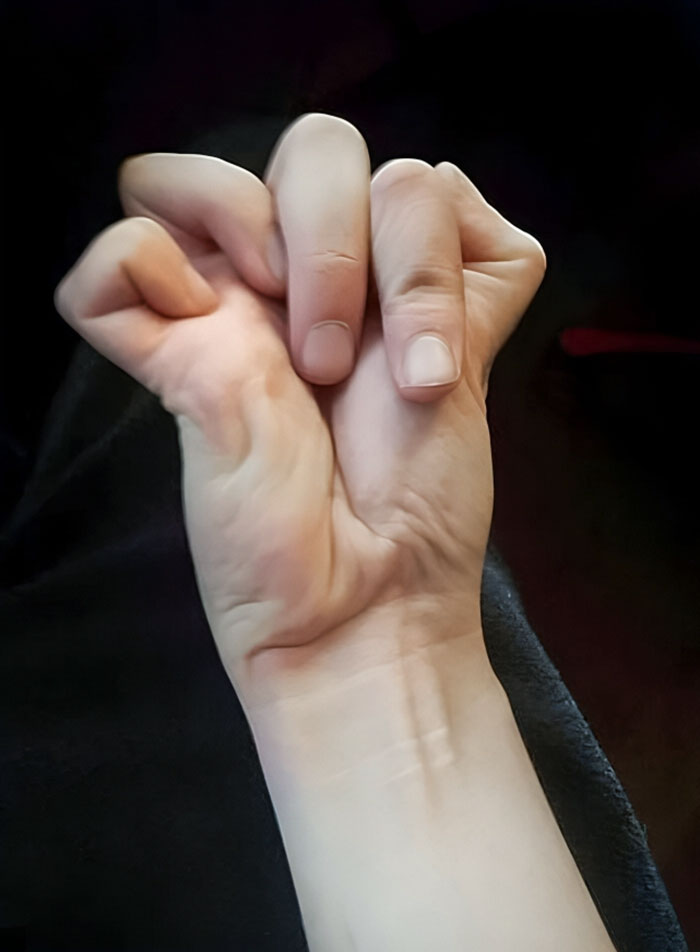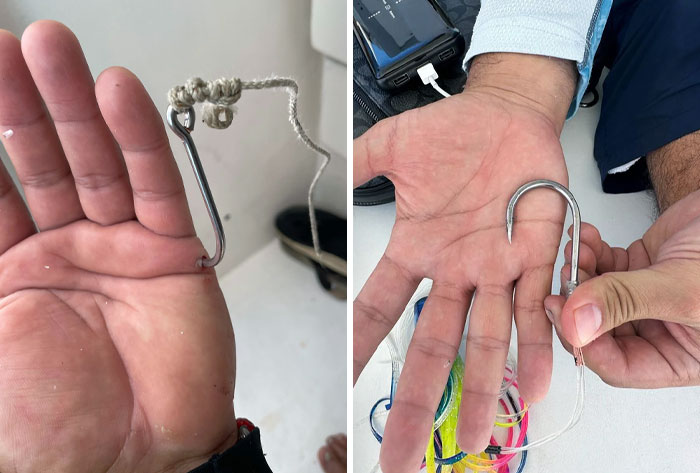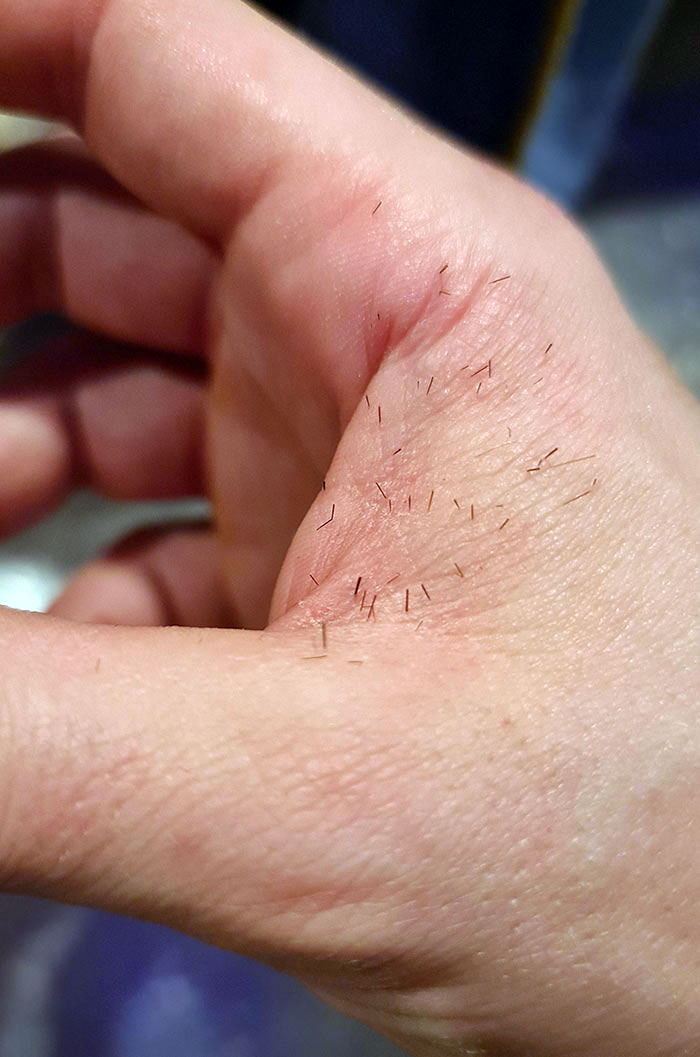A single picture might be worth a thousand words, but far more impressive is how strongly they can make us feel. There are some images out there that can unnerve you so much that you practically feel them through the screen… even though you might be thousands of miles away from what’s happening.
Bored Panda has compiled this list of images from all over the internet that are bound to make you feel uncomfortable. Scroll down for the best of the worst. But do keep in mind that this list is only for the bravest of Pandas—you may want to be careful if you’re extremely empathetic, sensitive (hi!), or don’t enjoy the company of bugs.
Bored Panda wanted to learn more about empathy, so we got in touch with social psychologist Alison Jane Martingano, Ph.D., an assistant professor at the University of Wisconsin - Green Bay, and the host of the 'What Do You Mean?' blog on Psychology Today. She was kind enough to explain to us why it is that we feel other people's discomfort and pain when looking at photos and explained how empathy isn't just a reflex but can also be trained and cultivated, like a 'muscle.' You'll find our full interview with her below.
This post may include affiliate links.
My Girlfriend Got Nailed At Work
According to social psychologist Martingano, from the University of Wisconsin - Green Bay, the key to why we can feel other people's pain and discomfort when looking at photos lies in our brain's ability to interpret visual cues.
"Humans can glean significant information about emotions solely from visual stimuli, without the need for other sensory input. The activation of our mirror neuron system—a set of brain cells that activate both when we perform an action and when we observe someone else doing the same—plays a central role," she explained to us.
"Specifically, mirror neurons in areas like the anterior insular and the anterior cingulate cortex activate when we witness another's pain, much in the same way they would if we were experiencing the pain ourselves. This accounts for why we might feel a visceral sensation, akin to ants crawling on our skin, when viewing images of others in similar situations."
Just A Little Itch
My Broken Arm From When I Was 11 Years Old. I Didn't Even Cry
The host of the 'What Do You Mean?' blog on Psychology Today walked Bored Panda through the idea that empathy can be cultivated. She noted that empathy is often likened to a 'muscle' that can be strengthened through effortful practice.
"However, the extent to which this is possible varies depending on the form of empathy being considered." Martingano said that the automatic activation of the mirror neuron system is primarily biological and "may be difficult to modify voluntarily."
She added, however, that other forms of empathy that are more cognitive in nature can be improved with practice."
My Teammate May Have Broken Her Finger At Volleyball Practice
Got A Splinter Under My Thumbnail
My Cousin's Friend's Foot Got Impaled While Riding His Dirt Bike
Though the photos featured in this article might make many people feel others' discomfort, they might not be the best when it comes to improving one's empathy. "Research suggests that ambiguous situations are useful opportunities to practice empathy. When emotions are easy to interpret, there is less opportunity for practice and improvement," Martingano explained to Bored Panda.
"On the other hand, deciphering ambiguous expressions or complex motives can help individuals refine their empathic skills. For instance, interpreting the expression on the Mona Lisa requires cognitive effort and engagement. Research has found that engaging in this way with art and literature offers a useful avenue for honing empathy skills, in addition to real-world interactions," the social psychologist said.
"In a nutshell, empathy isn't just an automatic reflex; it's also a muscle you strengthen with practice. And when it comes to strengthening that muscle, the trickier the emotional puzzle, the better the workout."
I Have Become The Cat Toy
I Really Should've Tied My Hair Together. Still Have Much Left, But Damn, That Hurted
So This Is Definitely Not A Place Where I Was Trying To Put The Nail
If we’re able to put ourselves in others’ shoes and feel what other people might be feeling, it shows that we have a high capacity for empathy, whether automatic or developed. This makes us care more for others and their opinions and can be invaluable during negotiations.
It’s interesting how this can extend even beyond the physical realm and into the digital one—we’re able to feel our skin crawling when we see someone interacting with bugs. Not only that, we can also feel others’ pain just from seeing photos of them hurt.
People who are very empathetic are often good at actively listening to what other people are saying. This means that they’re genuinely interested in the other person’s perspective and not just waiting for their turn to speak. Not only that, but they’re also intuitively good at understanding how others might be feeling, just from looking at their body language and hearing their tone of voice.
I Had One Of Those Little Pieces Of Skin And Pulled It
I Got A Sunburn, And My Skin Is Starting To Peel Off, So I Can Make A Little Pouch For Coins
Eyelid Somehow Got Stuck In The Zipper Of His Jacket
Naturally, someone who is empathetic will want to help others who may be in pain or discomfort, Verywell Mind explains. However, there are some downsides to being so sensitive.
For example, hearing tragic news stories will affect you far more than some other people in your social circle. Similarly, you may be more sensitive to social injustices or even what you see on the silver screen.
Broadly speaking, there are three main types of empathy. Affective empathy, for instance, focuses on a person’s ability to understand other individuals’ emotions, and how to respond to them.
I Accidentally Ripped Out My Eyelashes An Hour Before My Wedding
I Got Out Of Bed Last Night And Didn't See This Charger That Had Fallen Off The Table. I Tried To Take A Step Back, When I Transferred My Weight And Heard A "Pop" Sound
Here's A Photo Of My Hand Cramp
Somatic empathy, on the other hand, means physically experiencing what others are feeling. You might blush if you see someone who’s embarrassed. Or you might feel like there are bugs on you if you see a photo of someone with bugs all over them.
Cognitive empathy, meanwhile, involves someone’s ability to understand what other people’s mental states might be like in a certain situation and what they might be thinking.
Or, as Verywell Mind puts it in a very meta way, it’s what psychologists call the theory of mind or thinking about what others are thinking.
I Stepped On A LEGO Block And Broke My Ankle
Fell Asleep In The Bath. Finger Brains
Fluorescent Eyedrops Show The Scratches On My Partner's Cornea After A Factory Accident. So That's Why It Hurts
So combine high empathy with whatever phobias you might have and even a single photo can make you very uncomfortable.
Someone who has entomophobia (the fear of insects) or arachnophobia (the fear of spiders), for example, would not only avoid interacting with these creatures in real life, but they’d also avoid looking at photos of them.
This Chinese Guy With A Major Sunburn
What Could Go Wrong If I Take A Picture With This Gopher Snake I Found On The Road?
I Was Working On Saturday Morning, And This Happened
According to the Cleveland Clinic, around one in ten American adults and roughly one in five teenagers will, at some point in their lives, deal with a phobia.
However, it’d be difficult to calculate exactly how many people are afraid of insects, but anywhere between 3% to 15% of the US population has a phobia of spiders. Arachnophobia, like other fears, is usually developed when someone is a child or teen.
Getting Braids Done Too Tightly
My Foot After Wearing A Wet Boot With A Hole In It For 10 Hours
Huntsman Spider Biting Someone
Broadly speaking, people can develop phobias due to traumatic experiences with certain animals, things, or conditions in their past. Say, if an insect hurt, severely frightened, or grossed you out when you were small, you may be more averse to dealing with them at all.
Similarly, if someone in your family or network of friends has a severe phobia, they might accidentally pass it on to you. Nothing traumatic may have happened to you personally, but you simply emulate the behaviors and attitudes of the people closest to you. Especially if they’re authority figures you trust, love, and respect.
I Slammed My Finger In My Car Door, And Just As It Was About To Finish Healing, I Smashed It Again
I Managed To Dislocate My Finger In 2 Directions At Once
Here's Me With A Giant Spider Hanging From My Mouth. It Fell Out Of A Tree And Grabbed My Lip On The Way Down
Phobias, fortunately, can be treated whether by the person themselves or with the help of a health specialist. You’d need to talk to your therapist or doctor for a personalized plan, but it’s likely that they’ll suggest either exposure therapy or cognitive behavioral therapy (CBT).
Shot A Nail Through My Hand
Apparently I Turned On The Wrong Burner
Eczema Seems To Be Infected Once Again, And I Need To Wait Until Monday To See A Doctor. It's As Painful As It Looks. Feels Like Ants Are Crawling Under My Skin
The former essentially means becoming desensitized to what you fear by exposing yourself to it. You could look at photos of insects, talk about them, and visit them at a zoo or local park.
Meanwhile, CBT, often used alongside exposure therapy, provides you with fresh new perspectives so that you change how you view an animal, object, or situation. By doing this, you can also change how you react to them.

 Dark Mode
Dark Mode 

 No fees, cancel anytime
No fees, cancel anytime 













